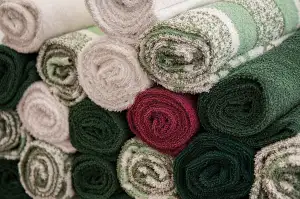Maintaining Boundaries: Understanding and Addressing Massage Creep in the Health Industry

- The Importance of Safe and Professional Massage Environments
- Recognizing the Signs of Massage Creep: What to Look Out For
- The Impact of Massage Creep on Mental and Physical Well-being
- How to Protect Yourself from Massage Creep: Tips for Clients
- The Role of Massage Therapists in Preventing Massage Creep
- Reporting Massage Creep: Taking Action for a Safer Massage Experience
Massage therapy is a valuable tool for relaxation and healing, providing numerous physical and mental health benefits. However, it is essential to acknowledge that not all massage experiences are positive. Unfortunately, there are instances where inappropriate behavior occurs during massages, known as "massage creep." This term refers to any unwelcome or non-consensual actions by the massage therapist that cross professional boundaries. It is crucial for both clients and therapists to understand what constitutes massage creep and how to address it effectively. By promoting awareness and education, we can strive towards creating a safe and respectful environment within the health industry.
The Importance of Safe and Professional Massage Environments
Safe and professional massage environments are crucial for ensuring the well-being of both clients and massage therapists. These environments prioritize the physical and emotional safety of everyone involved. They adhere to strict guidelines and protocols that promote professionalism, respect, and boundaries. By creating a safe space, clients can relax and trust that they will receive a therapeutic experience free from any form of inappropriate behavior or misconduct. Additionally, a professional environment fosters trust between clients and therapists, allowing for open communication and effective treatment.
Recognizing the Signs of Massage Creep: What to Look Out For
It is essential for clients to be aware of the signs of massage creep in order to protect themselves. Some red flags to watch out for include therapists who constantly touch sensitive areas without a valid reason, make inappropriate comments or gestures, or exhibit overly intimate behavior. Clients should also be cautious if their therapist insists on working alone, avoids using proper draping techniques, or pressures them into removing more clothing than they are comfortable with. Trust your instincts and if something feels off, it's important to speak up and take action.
The Impact of Massage Creep on Mental and Physical Well-being
Massage creep can have a profound impact on both mental and physical well-being. The experience of inappropriate behavior during a massage can leave clients feeling violated, anxious, and traumatized. These negative emotions can lead to increased stress levels, difficulty in trusting others, and even the development of mental health issues such as anxiety and depression. Physically, massage creep can cause discomfort, pain, and injury, undermining the very purpose of seeking therapeutic touch. It is crucial to address this issue to ensure that individuals can receive massages in a safe and supportive environment that promotes their overall well-being.
How to Protect Yourself from Massage Creep: Tips for Clients
When it comes to protecting yourself from massage creep, there are a few key tips to keep in mind. First and foremost, trust your instincts. If something feels off or uncomfortable during a massage, speak up and express your concerns to the therapist. Additionally, establish clear boundaries before the session begins. Communicate any areas of your body that you do not want to be touched or any specific techniques that you are not comfortable with. It is also important to remember that you have the right to end the session at any time if you feel unsafe or uncomfortable. Finally, consider seeking recommendations and choosing reputable establishments with trained and licensed therapists. Taking these precautions can help ensure a safer and more enjoyable massage experience.
The Role of Massage Therapists in Preventing Massage Creep
Massage therapists play a crucial role in preventing massage creep. They must establish clear boundaries and maintain a professional demeanor at all times. It is their responsibility to create a safe and comfortable environment for clients, where they feel respected and protected. By adhering to ethical guidelines and professional standards, massage therapists can help prevent inappropriate behavior from occurring. They should also be vigilant in recognizing any signs of discomfort or boundary violations from clients and address them promptly. Through their actions and commitment to professionalism, massage therapists can contribute to a safer and more respectful massage culture.
Reporting Massage Creep: Taking Action for a Safer Massage Experience
Reporting Massage Creep is crucial for ensuring a safer massage experience. If you encounter any inappropriate behavior during your session, it is important to speak up. Start by notifying the establishment where the incident occurred. Provide them with a detailed account of what happened and any evidence you may have. Additionally, consider reporting the incident to local authorities or professional massage associations. By taking action, you not only protect yourself but also contribute to creating a safer environment for others.
In conclusion, promoting a safe and respectful massage culture is essential for the well-being of both clients and massage therapists. By understanding and addressing massage creep, we can create an environment where boundaries are respected and inappropriate behavior is not tolerated. Clients must be vigilant in recognizing the signs of massage creep and take steps to protect themselves. Massage therapists have a crucial role in preventing massage creep by maintaining professional boundaries and creating a safe space for their clients. Reporting incidents of massage creep is vital to hold perpetrators accountable and ensure a safer massage experience for all. Together, let's work towards promoting a culture that prioritizes safety, respect, and professionalism in the health industry.
Published: 21. 12. 2023
Category: Health



